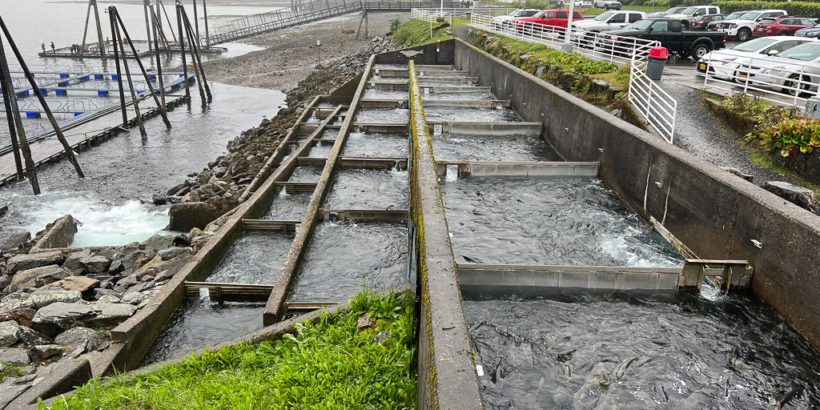If you ever find yourself in Juneau, Alaska, you don’t want to leave without first having some type of salmon experience.
One of the best ways to get a memorable encounter with salmon is to head to the DIPAC’s Macaulay Salmon Hatchery.
Below, I’ll tell you everything you need to know to have a great visit and to decide if it’s worth it.
Table of Contents
What is Juneau’s Salmon Hatchery?
Juneau’s Salmon Hatchery is officially known as the “DIPAC’s Macaulay Salmon Hatchery,” and is one of the most interesting tourist attractions in Juneau, Alaska.
It’s a place where you can get close to thousands of salmon in various stages of their life and learn about this bubbling hatchery that’s responsible for raising 130 million chum, king, and coho salmon every year.
The hatchery is open regularly during the summer months from May through September.
Hours are usually 10am to 5pm or 6pm depending on the day of the week but be sure to confirm before your visit.
You can visit during the winter but you’ll need to schedule an appointment first.
The site is pretty small and you don’t need much time to give it a proper visit. 45 minutes to an hour may be all you need.
Related Juneau Posts:
- Juneau Whale Watching Review: Flukes for Days!
- Mendenhall Glacier Ultimate Guide: Tips for Exploring
- The Gold Creek Salmon Bake Review
- Mount Roberts Tramway Review: Here’s What You Need to Know
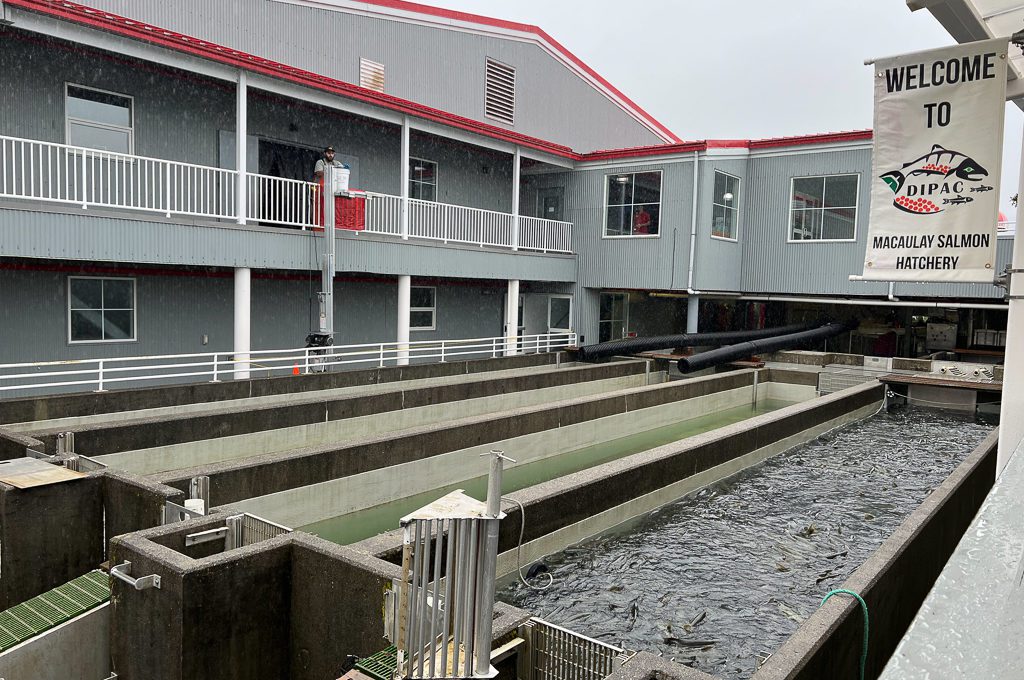
Where is the Salmon Hatchery?
The Salmon Hatchery is located at: 2697 Channel Dr, Juneau, AK 99801.
From the Cruise Terminal area, it should take about 10 minutes to get there by automobile/taxi.
This is only a couple of minutes away from the Salmon Bake, so you can always think about visiting the two together, especially since they complement each other so well.
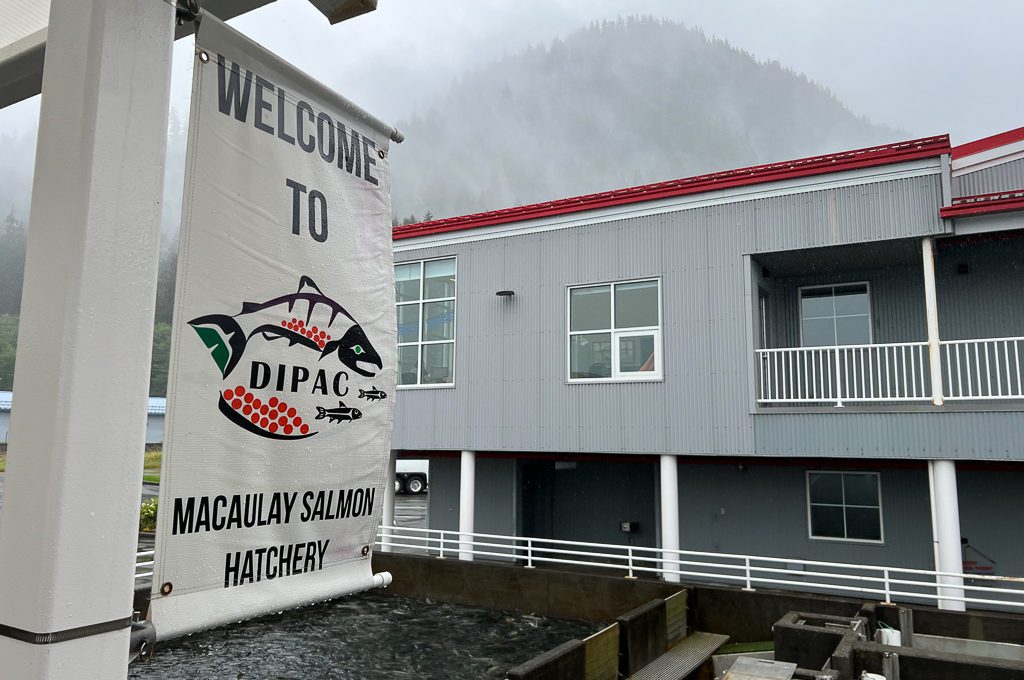
Juneau’s Salmon Hatchery experience
As soon as you stroll up, head to a viewing glass window where you can get an up close encounter with these salmon.
When I visited, this was my first time to ever get a good close glimpse at salmon and I thought it was a pretty fascinating view.
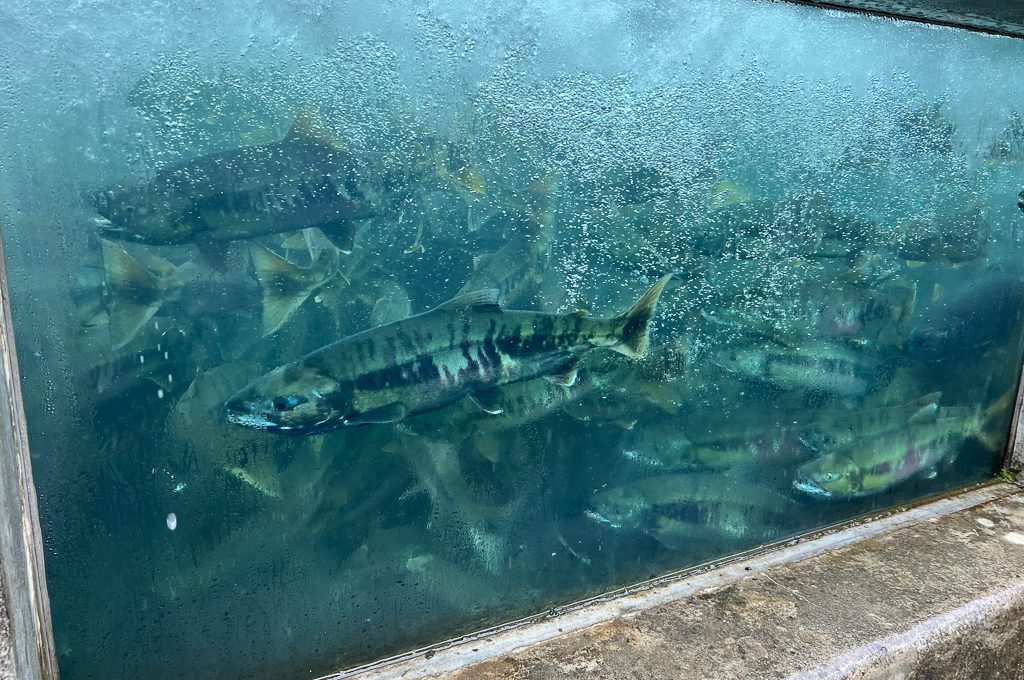
After that, make your way towards the entrance on the elevated walkway where you might encounter a group congregating for a little intro into the hatchery.
If you stumble upon this in the middle of the presentation, you can just hang out and another one will begin shortly after that one ends.
Your guides will give you some context about the operations here and how they work to enhance the opportunity for the commercial, sport, and subsistence fishing.
Officially their mission is to:
sustain and enhance valuable salmon resources of the State of Alaska for the economic, social, and cultural benefit of all citizens, and to promote public understanding of Alaska’s salmon resources and salmon fisheries through research, education, and tourism.
There is debate about whether or not hatcheries are a net positive but I don’t know nearly enough about that to offer any kind of meaningful opinion.
I just know that people feel strongly on both sides of the debate.
Anyway, while you’re up on the walkway, you’ll have some great views including a good look at the salmon ladder.
This is a 450 foot long “ladder” that simulates a flowing creek for the salmon to swim up against. I’m guessing that it also helps trigger their spawning instincts, too.
It’s one of those unique things where you could go your entire life without ever knowing that it exists so it’s really cool to experience it at least once.
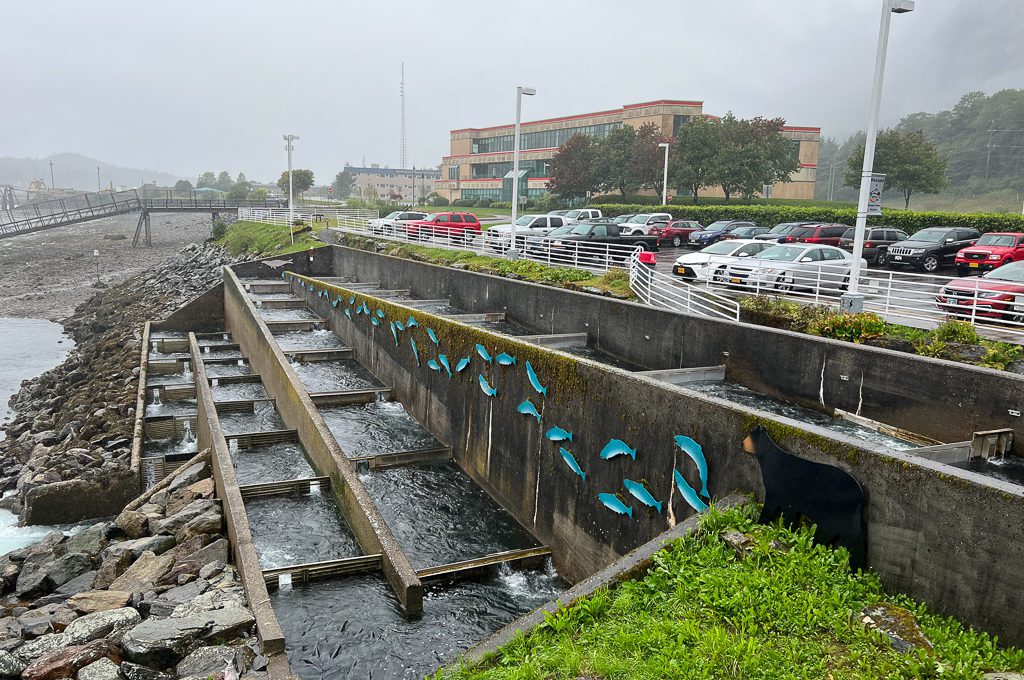
The water flows down into the channel and gets funneled through these narrow rectangular slots which is how some of the salmon work their way up.
When we visited in late July, the ladder was filled with adult salmon fighting against the current.
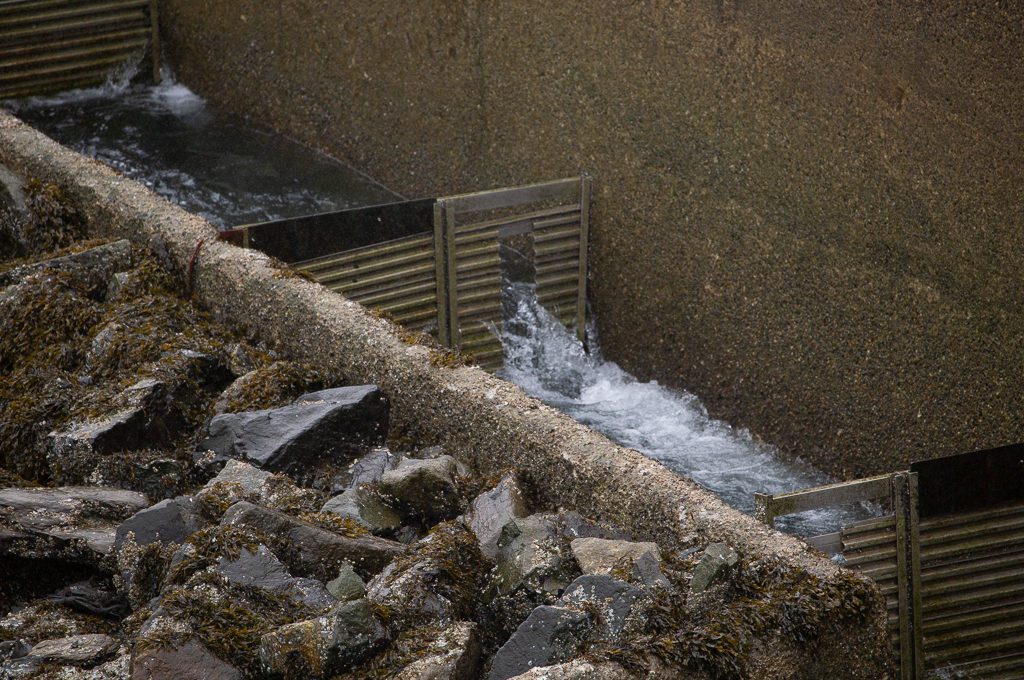
At the base of the ladder, salmon entered from the channel amid white water chaos.
Watching dozens upon dozens of these fish propel themselves over rocks really gave me a sense of the type of drive hardwired into these creatures.
The peak salmon run is quite a sight to behold.
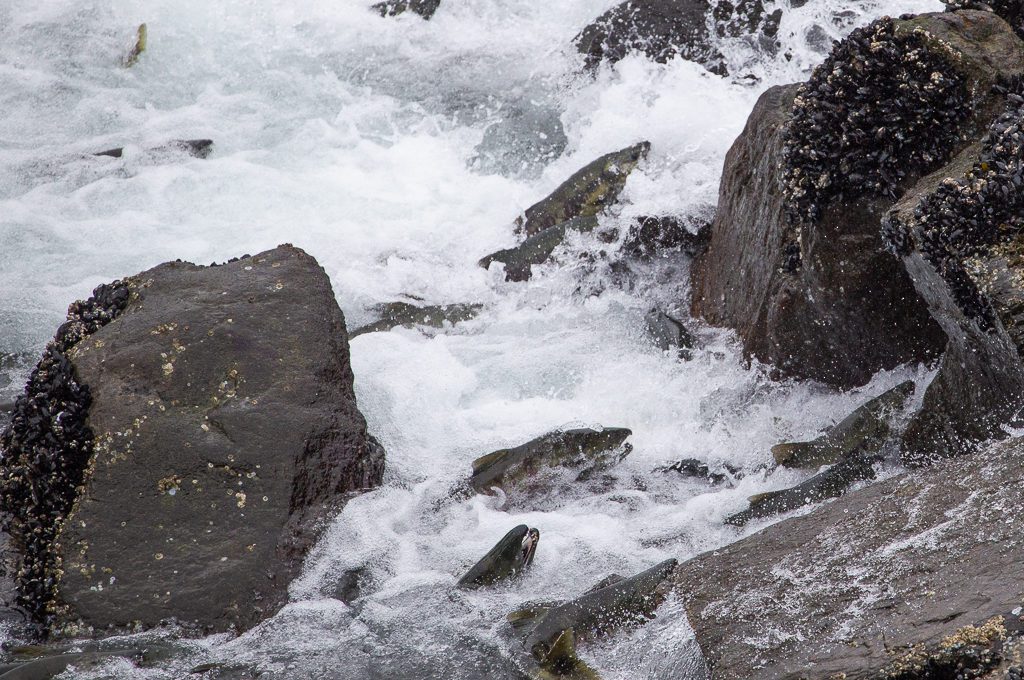
At the end of the ladder, pools where the salmon work their way into were filled to the brim.
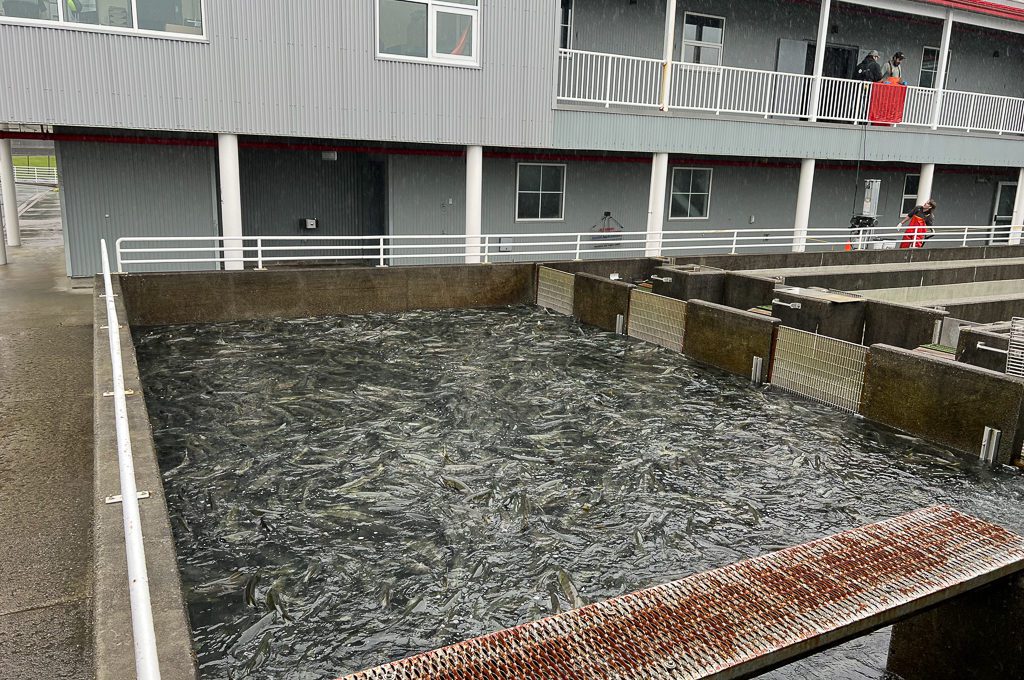
After checking out those, you can head inside and purchase your admission ticket.
I was interested in doing the full tour but they were not offering that during our visit so we had to just settle for the standard admission.
To kick off the paid portion of our visit, we decided to head to the other building where they house all of the “baby” salmon.
In here, you will see tens of thousands of salmon during the right time of year. Watching them move in these dark, ghostly clouds back-and-forth was a mesmerizing visual.
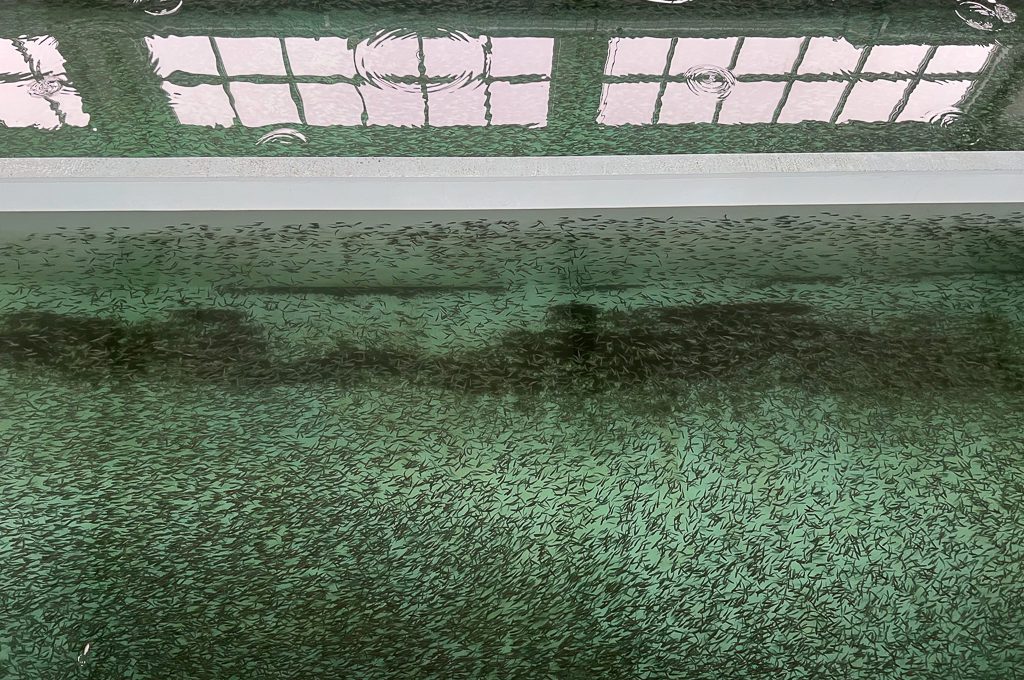
These little fish will hang out here until they get a little bit bigger and then get moved to one of the saltwater net pens outside.
They get released from those pens in late spring to early summer and then head out to the open ocean where they will try to beat the odds for a few years.
Some even swim as far as Japan!
Eventually, they will make their way back to this exact spot which is what we were witnessing during our visit.
The salmon are then separated based on their species and the hatchery begins the egg collection and fertilization process, which will result in millions of fertilized eggs that get developed in the dark incubation rooms.
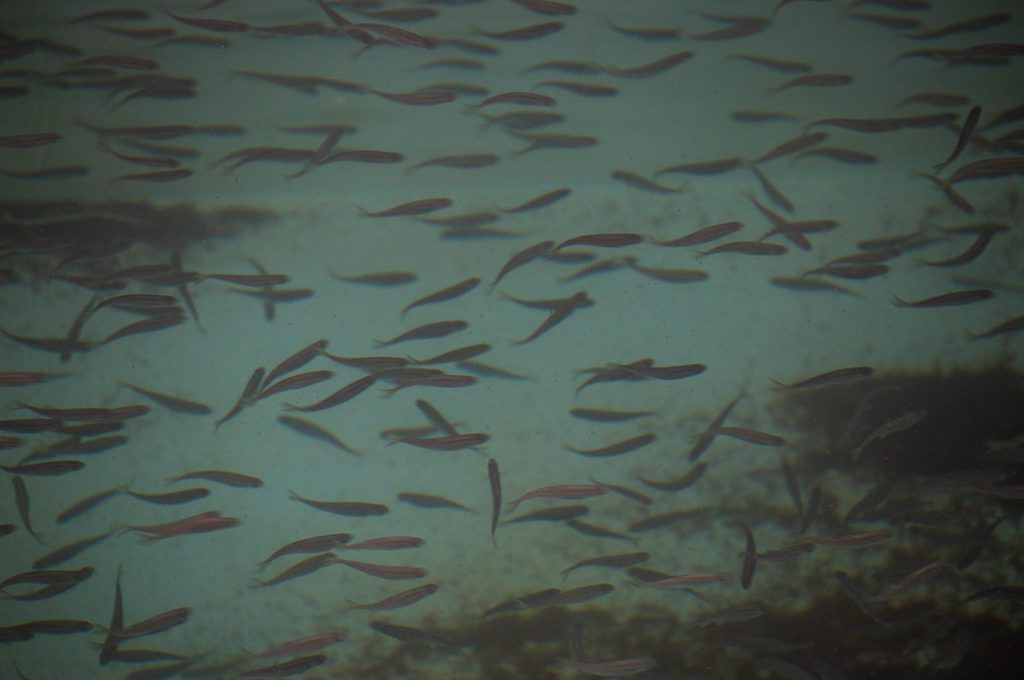
After checking out these tiny salmon, we spent a few minutes out on the deck which is also a highlight of the experience, especially if you are interested in wildlife spotting.
We visited on a rainy day but you can still enjoy the site even when it’s rainy. A lot of the outdoor parts are at least partially covered and there’s plenty to see indoors.
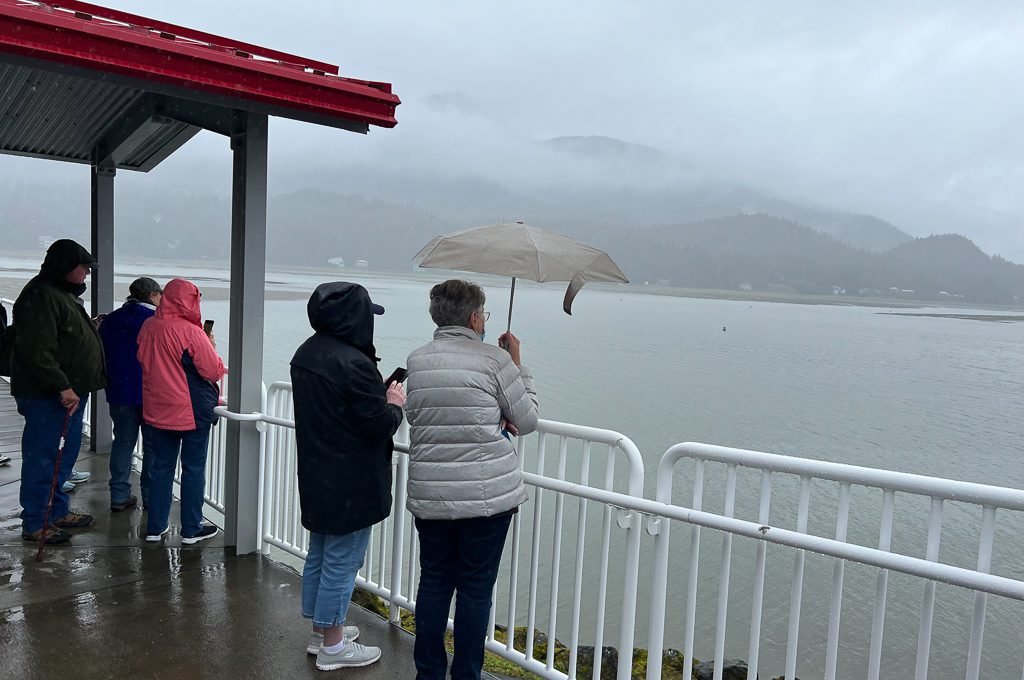
From the deck, we could see several bald eagles.
If you’ve never been to Juneau before, especially to this particular area, you may be shocked to see how common bald eagles are.
You can find them on the shore, in the sky, and even on light posts.
I’d actually never seen a bald eagle before so I got more sightings than I ever imagined during our stay.
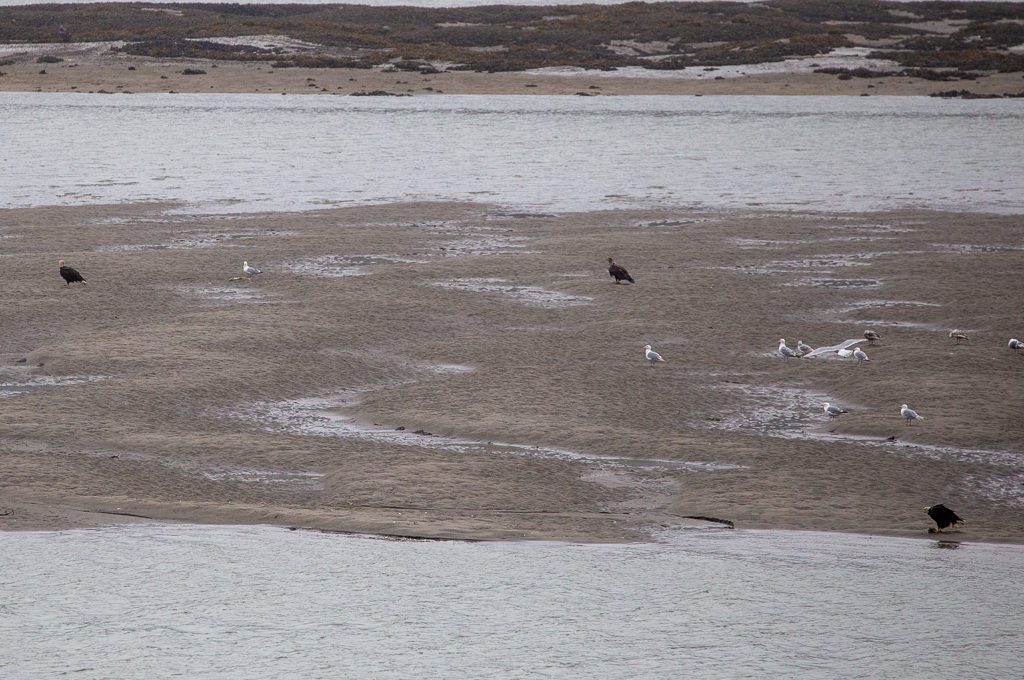
Look to the water and you might spot some harbor seals.
The seals were busy snatching up salmon that were coming back to the salmon ladder. I’m sure their bellies stay full this time of year given the endless seafood buffet that is open for business.
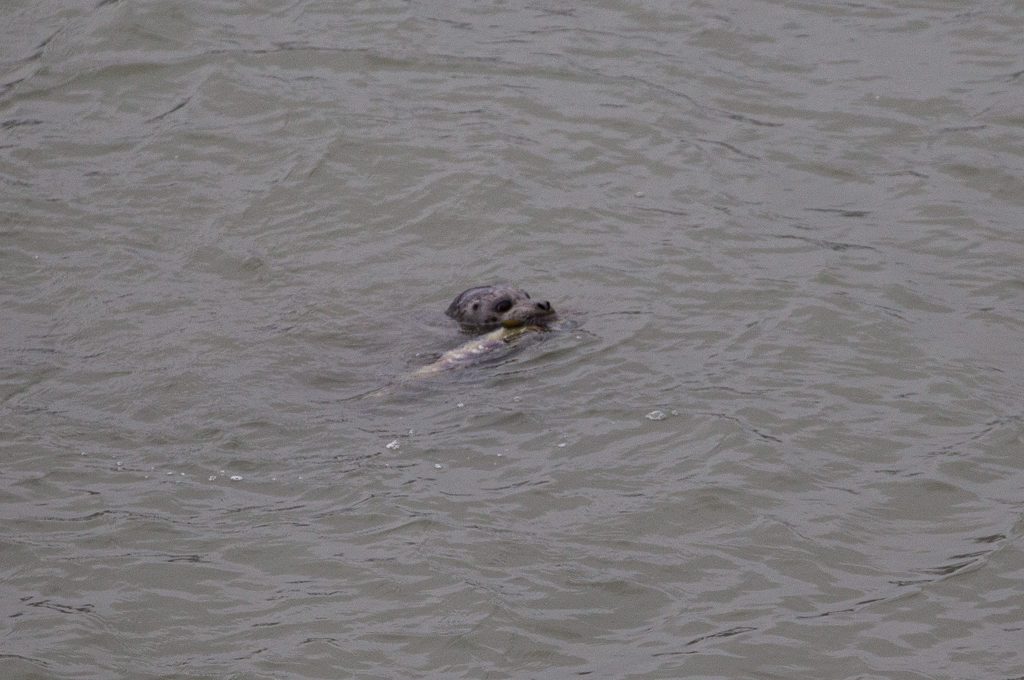
From there, we ventured inside the visitor center where there are a few worthwhile exhibits to check out including a beautiful stuffed brown bear.
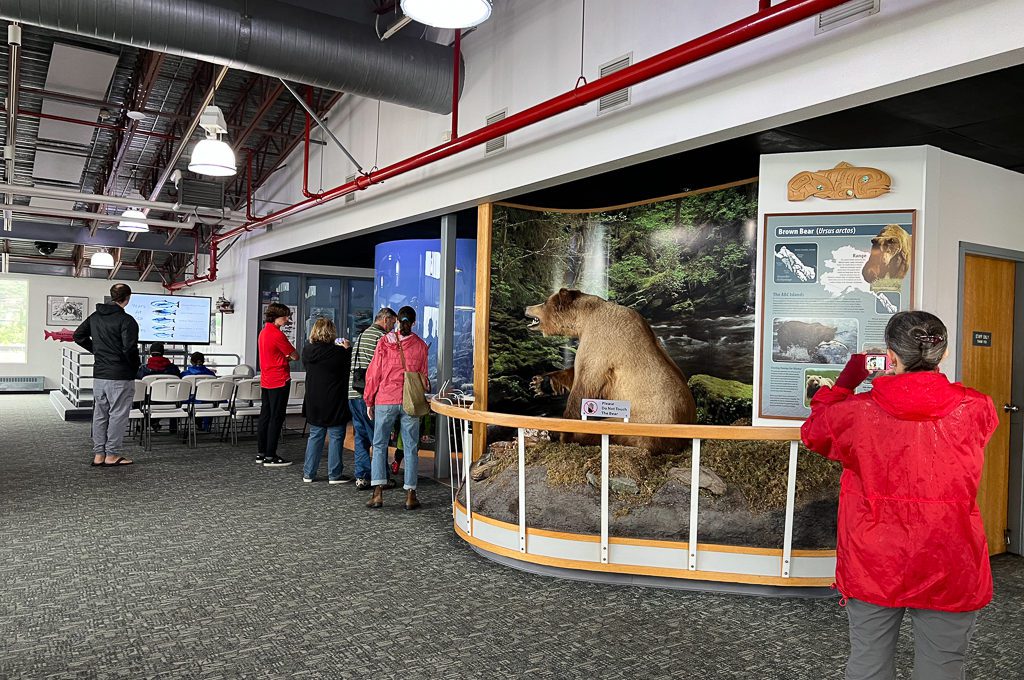
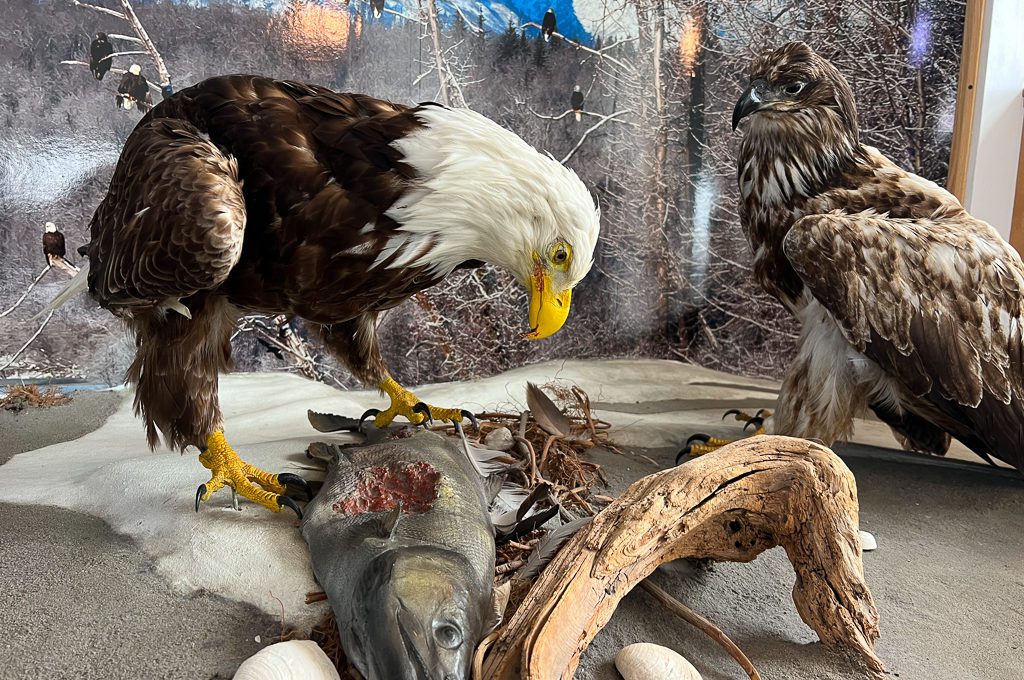
The hatchery is home to a small aquarium which features a variety of tanks and exhibits.
It’s compact but some of the marine life is really cool.
One tank featured those monster-sized starfish that cling to the rocky Alaskan shores.
This was great because we saw plenty of them from afar on our boat tour of Glacier Bay a few days before.
One giant crab inside the tank was actually feasting upon one of the starfish that was not able to get away — a site that I’ve never seen before.
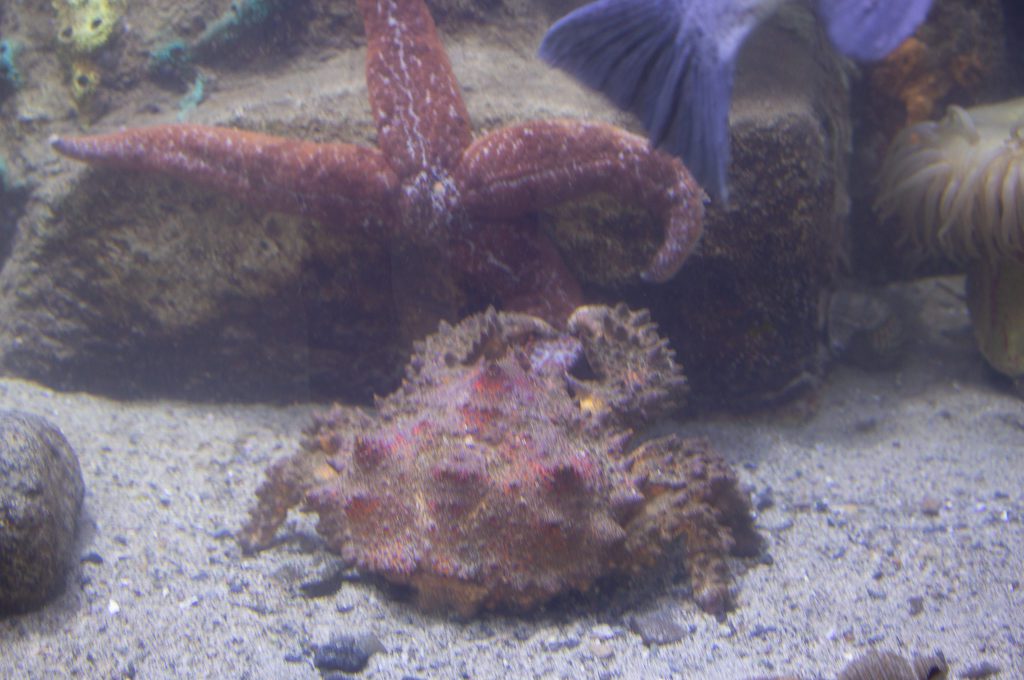
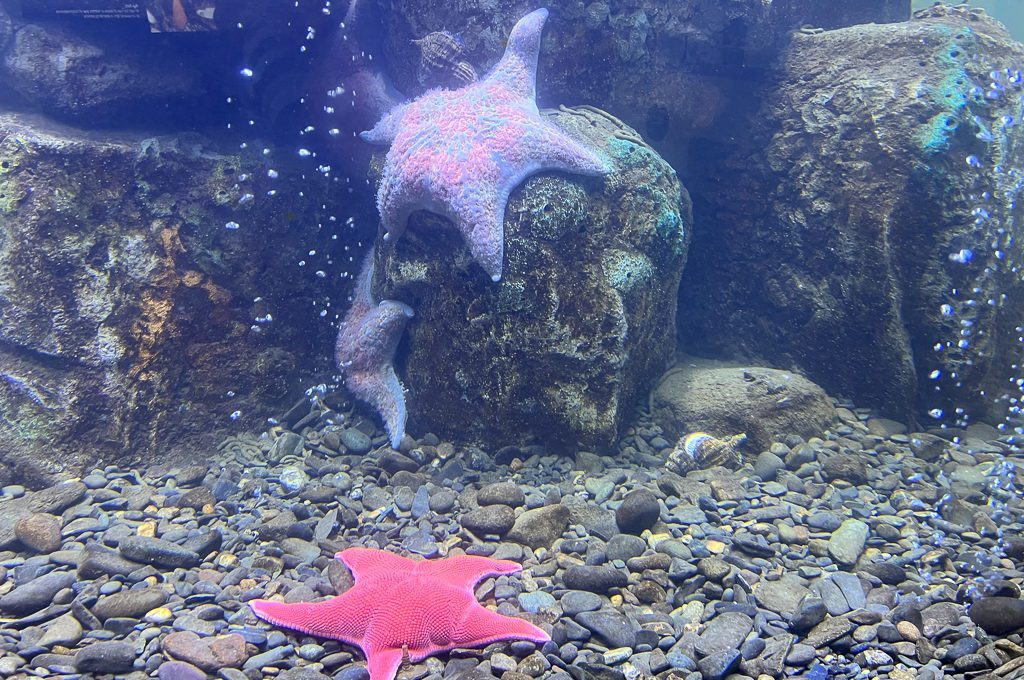
They’ve got some other interesting marine life that you want to check out.
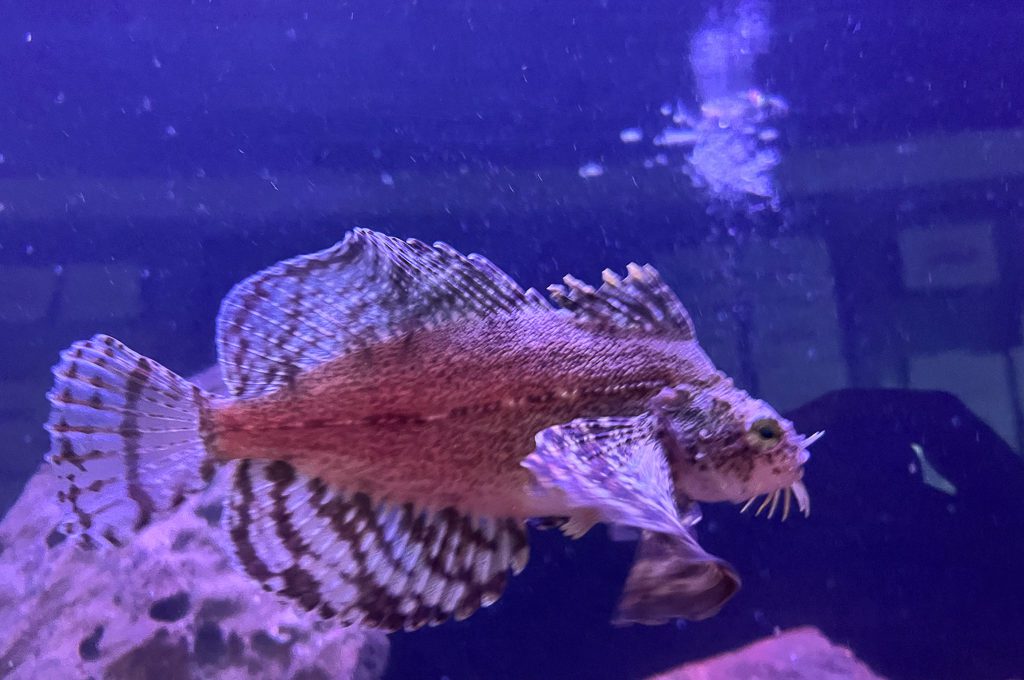
And they also have a touch tank which is perfect for kids and curious adults as well.
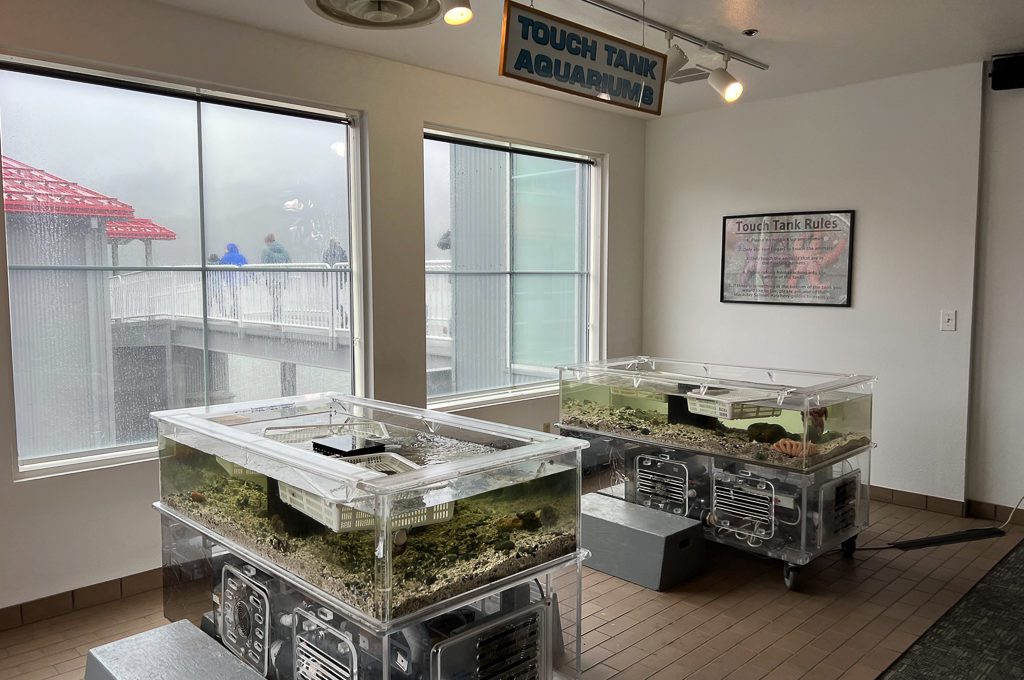
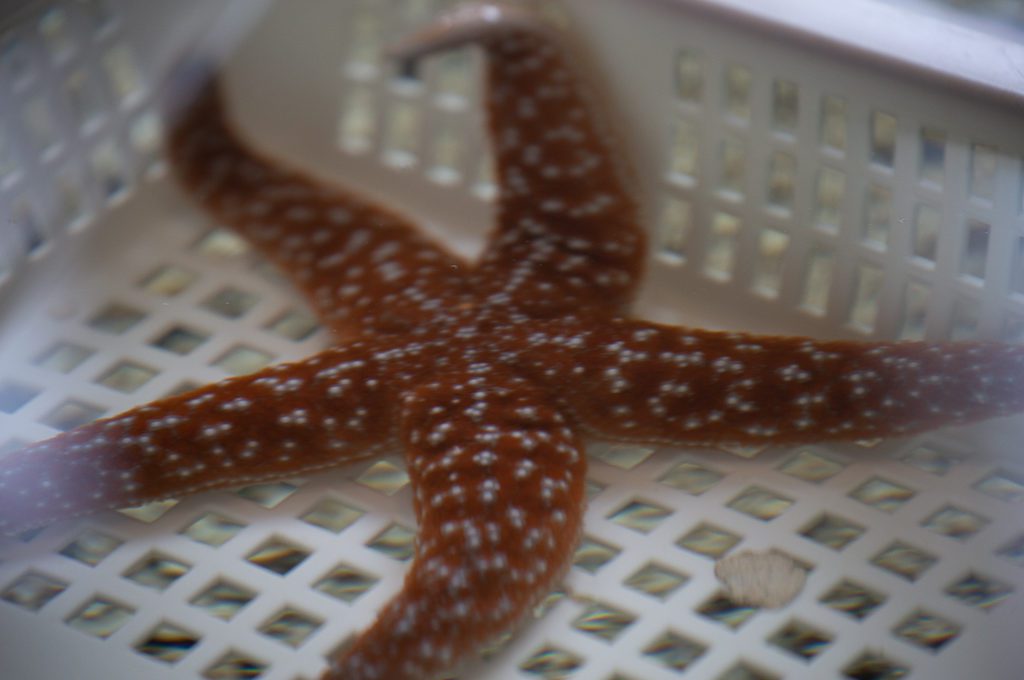
There are some stairs towards the back that you can head down which will take you down and give you a closer look at some of the tanks.
I’d recommend heading down just so you can get a really close view of the salmon.
Until this visit, I never actually realized how big some of these fish got! They are both hideous and beautiful at the same time.
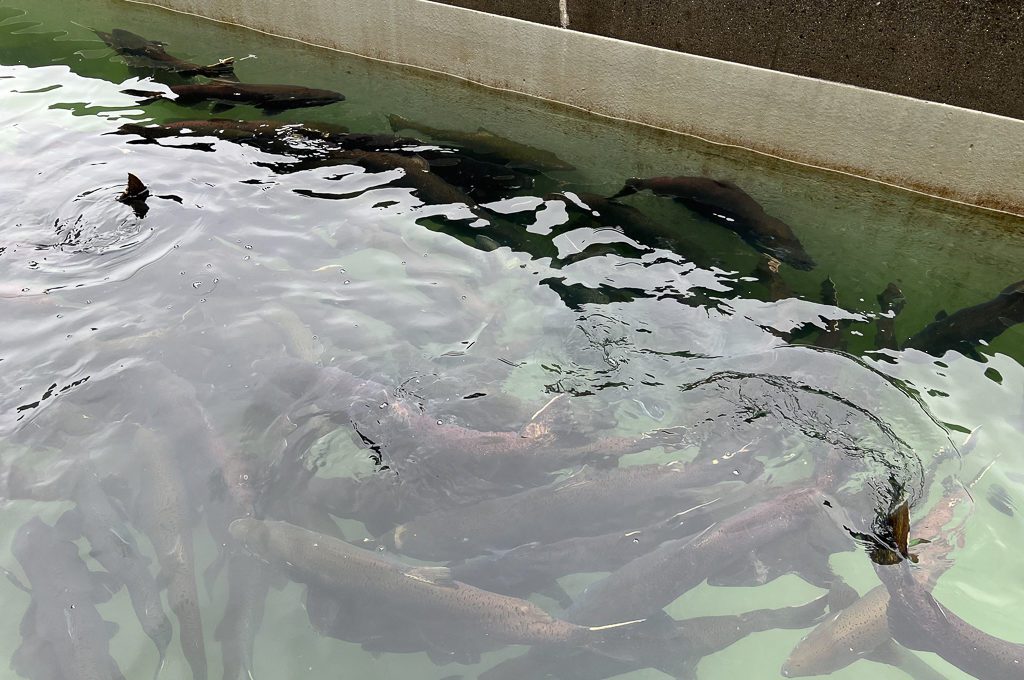
It was at this pool where we watched them leaping out of the water, trying to find their way upstream even though presumably this was their last stop. Their inner drive just never lets up.
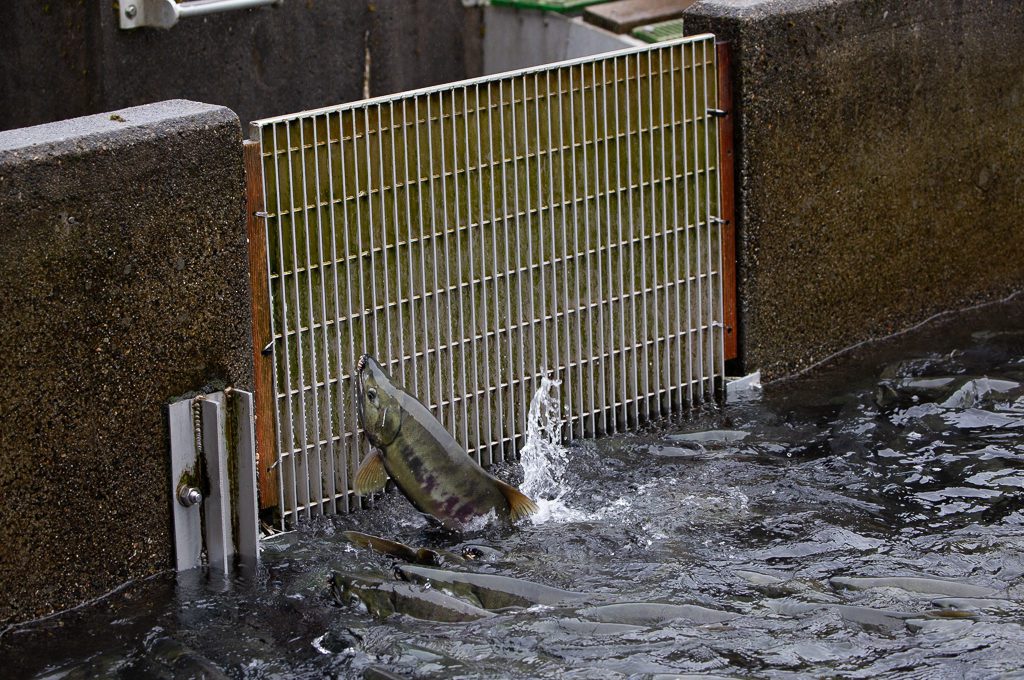
Final word
Overall, I felt like this was a pretty fascinating destination.
It really helped that we visited during the peak salmon run because seeing so many of them fighting their way upstream was one of the most impressive displays of wildlife behavior I’ve seen.
It would’ve been extra interesting to get one of the behind-the-scenes tours but unfortunately for us those were not being offered.
Given the low price point of the attraction, I definitely say it’s worth a visit especially if you have an interest in the local wildlife.
Daniel Gillaspia is the Founder of UponArriving.com and the credit card app, WalletFlo. He is a former attorney turned travel expert covering destinations along with TSA, airline, and hotel policies. Since 2014, his content has been featured in publications such as National Geographic, Smithsonian Magazine, and CNBC. Read my bio.

